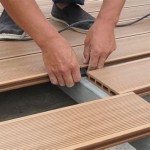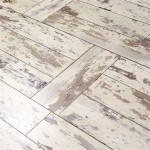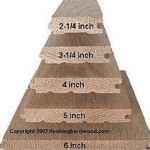Earthwerks Loose Lay Flooring: A Comprehensive Review
Earthwerks is a prominent name in the resilient flooring industry, offering a diverse range of flooring solutions, including a popular line of loose lay vinyl planks and tiles. Loose lay flooring, known for its ease of installation and potential for repositioning, has gained significant traction among homeowners and businesses seeking a practical and aesthetically pleasing flooring option. This article provides a comprehensive review of Earthwerks loose lay flooring, exploring its features, benefits, drawbacks, installation process, and overall value proposition.
Earthwerks loose lay flooring distinguishes itself from traditional vinyl flooring through its unique installation method. Unlike glue-down or click-lock systems, loose lay flooring relies on a high-friction backing and the sheer weight of the planks or tiles to remain in place. This design allows for quicker and simpler installation, often without the need for adhesives or specialized tools. This characteristic makes it an appealing choice for both DIY enthusiasts and professional installers aiming to minimize installation time and associated costs.
The Earthwerks loose lay collection encompasses a variety of styles and designs, replicating the appearance of hardwood, stone, and tile. This allows consumers to achieve the desired aesthetic without the higher cost and maintenance requirements of natural materials. The flooring is available in various plank sizes and tile formats, providing flexibility in design and allowing for customization to suit specific room dimensions and preferences.
Key Benefits of Earthwerks Loose Lay Flooring
Earthwerks loose lay flooring boasts several key advantages that contribute to its growing popularity. These benefits include ease of installation, durability, comfort, and aesthetic versatility.
Ease of Installation: Arguably the most significant benefit of Earthwerks loose lay flooring is its straightforward installation process. The absence of adhesives or locking mechanisms simplifies the installation, reducing both time and labor costs. The planks or tiles are simply laid onto a prepared subfloor, and their weight and friction backing keep them securely in place. This installation method also allows for easy replacement of damaged planks or tiles, as they can be lifted and replaced without disturbing the surrounding flooring.
The simplified installation process also translates to less disruption during renovation projects. Since no drying time is required for adhesives, homeowners can immediately walk on the newly installed floor. This is a significant advantage over glue-down installations, which typically require a curing period before the floor can be used.
Durability and Water Resistance: Earthwerks loose lay flooring is constructed from high-quality vinyl materials, providing excellent durability and resistance to wear and tear. The flooring is designed to withstand heavy foot traffic, making it suitable for both residential and commercial applications. The wear layer, typically measured in mils (thousandths of an inch), provides protection against scratches, scuffs, and stains. A thicker wear layer generally indicates greater durability and longevity.
Furthermore, Earthwerks loose lay flooring is inherently water-resistant, making it an ideal choice for areas prone to moisture, such as bathrooms, kitchens, and basements. The waterproof nature of the vinyl prevents water from penetrating the flooring, protecting the subfloor from water damage and preventing the growth of mold and mildew. This is a critical advantage over natural materials like hardwood, which can be susceptible to warping and damage from moisture.
Comfort and Sound Absorption: Vinyl flooring, in general, offers a more comfortable underfoot feel compared to hard surfaces like tile or concrete. Earthwerks loose lay flooring often incorporates a cushioned layer that enhances comfort and reduces fatigue during prolonged standing. This is particularly beneficial in kitchens or other areas where people spend a significant amount of time on their feet.
In addition to comfort, Earthwerks loose lay flooring provides excellent sound absorption properties. The resilient nature of the vinyl helps to dampen noise, reducing the transmission of sound between floors. This is a valuable feature for apartments, condominiums, and multi-story homes, where noise reduction is a priority.
Aesthetic Versatility: Earthwerks offers a wide range of designs and styles in its loose lay flooring collection, replicating the look of natural materials such as hardwood, stone, and ceramic tile. This versatility allows homeowners to achieve the desired aesthetic without the high cost and maintenance associated with natural materials. The availability of different plank sizes, tile formats, and color variations provides further customization options, allowing for the creation of unique and personalized flooring designs.
The realistic textures and patterns found in Earthwerks loose lay flooring mimic the natural variations found in wood and stone, creating a visually appealing and authentic look. This attention to detail enhances the overall aesthetic appeal of the flooring and contributes to a more luxurious and sophisticated feel.
Potential Drawbacks of Earthwerks Loose Lay Flooring
While Earthwerks loose lay flooring offers numerous benefits, it also has some potential drawbacks that should be considered before making a purchase. These potential drawbacks include subfloor requirements, susceptibility to movement, and cost considerations.
Subfloor Requirements: Although loose lay flooring is generally forgiving, proper subfloor preparation is still crucial for a successful installation. The subfloor must be clean, level, and dry to ensure that the planks or tiles lay flat and remain securely in place. Uneven or damaged subfloors can cause the flooring to shift or buckle over time. In some cases, it may be necessary to repair or level the subfloor before installing Earthwerks loose lay flooring, which can add to the overall cost and time of the project.
Furthermore, certain types of subfloors may not be suitable for loose lay flooring. For example, highly porous subfloors may not provide sufficient friction to hold the planks or tiles in place. It is important to consult with a flooring professional to assess the suitability of the existing subfloor and determine if any preparation is necessary.
Susceptibility to Movement: Because loose lay flooring is not glued or locked together, there is a potential for the planks or tiles to shift or move under heavy traffic or furniture. This is particularly true in large open areas or in areas where furniture is frequently moved. While the high-friction backing helps to minimize movement, it is not a foolproof solution. Using double-sided tape around the perimeter of the room or under heavy furniture can help to prevent movement, but this may compromise the "loose lay" advantage.
The degree of movement can also depend on the quality of the flooring and the type of backing used. Higher-quality loose lay flooring with a thicker wear layer and a denser backing is less likely to shift than lower-quality options. Regular maintenance, such as sweeping and vacuuming, can also help to prevent the accumulation of dirt and debris that can contribute to movement.
Cost Considerations: While Earthwerks loose lay flooring can be a cost-effective alternative to natural materials like hardwood or stone, it can still be more expensive than some other types of vinyl flooring. The price of the flooring can vary depending on the style, design, wear layer thickness, and retailer. In addition to the cost of the flooring itself, it is important to factor in the cost of any necessary subfloor preparation and installation. While DIY installation can save on labor costs, it is important to have the necessary skills and tools to ensure a successful installation.
It is important to compare prices from different retailers and to consider the long-term cost of ownership when making a purchasing decision. While a cheaper flooring option may seem appealing in the short term, it may not offer the same durability and longevity as a higher-quality option, potentially leading to more frequent replacement and higher overall costs in the long run.
Installation of Earthwerks Loose Lay Flooring
The installation process for Earthwerks loose lay flooring is generally straightforward, making it a popular choice for DIY enthusiasts. However, proper preparation and attention to detail are essential for a successful and long-lasting installation. The following steps outline the basic installation process:
Subfloor Preparation: As previously mentioned, proper subfloor preparation is crucial for a successful loose lay flooring installation. The subfloor must be clean, level, and dry. Any loose debris, dirt, or dust should be removed by sweeping or vacuuming. Any cracks, holes, or unevenness should be repaired using a patching compound or leveling compound. The subfloor should also be tested for moisture content to ensure that it meets the manufacturer's recommendations.
Acclimation: Before installation, the Earthwerks loose lay flooring should be acclimated to the room temperature for at least 48 hours. This allows the flooring to expand or contract to its normal size, preventing any gaps or buckling after installation. The flooring should be stored in a dry, well-ventilated area during acclimation.
Layout and Planning: Before laying the planks or tiles, it is important to plan the layout of the room. Start by measuring the room and determining the center point. Then, dry-lay the flooring to determine the best layout and to ensure that the planks or tiles will fit properly. Consider the direction of the planks or tiles and how they will align with the room's features. Avoid placing narrow pieces of flooring along the edges of the room, as this can be visually unappealing.
Installation: Once the layout has been determined, begin laying the planks or tiles, starting from the center of the room and working outwards. Simply position the planks or tiles on the subfloor, ensuring that they are aligned properly and that there are no gaps between them. The weight and friction backing of the flooring will keep it in place. Use a utility knife to cut the flooring to fit around walls, doorways, and other obstructions.
Finishing Touches: After the flooring has been installed, install baseboards or quarter round molding to cover the edges of the flooring and to create a finished look. Clean the floor with a damp mop to remove any dirt or dust. Avoid using harsh chemicals or abrasive cleaners, as these can damage the flooring. Follow the manufacturer's recommendations for cleaning and maintenance.
While the installation process is relatively simple, it is important to consult with a professional installer if you are unsure about any aspect of the installation. A professional installer can ensure that the subfloor is properly prepared and that the flooring is installed correctly, maximizing its longevity and performance.

Earthwerks Flooring At Com

Earthwerks Vinyl Flooring At Com

Earthwerks Vinyl Flooring At Com

Earthwerks

Earthwerks Vinyl Flooring At Com

Earthwerks Vinyl Flooring At Com

Karndean Looselay Longboard 10 In X 59 Llp306 Pearl Oak Floorzz

Vinyl Plank Flooring Review 2 Years Later Love Renovations

Karndean K Trade Loose Lay Llp145 Efloors Com

Karndean Looselay Longboard 10 In X 59 Llp307 Neutral Oak Floorzz
Related Posts








